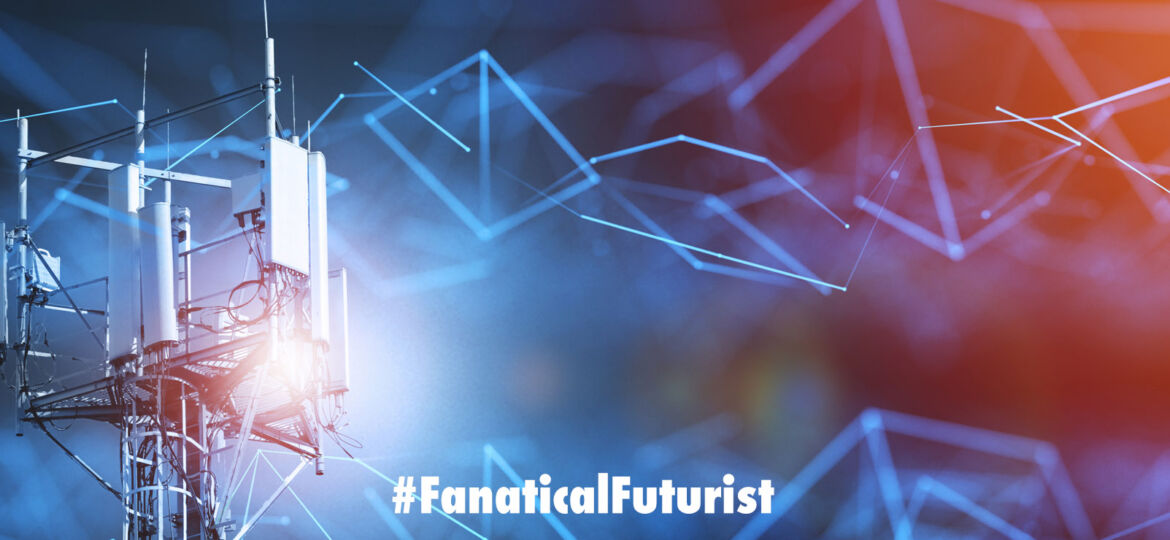
WHY THIS MATTERS IN BRIEF
Imagine never having to plug your devices into a plug socket again, and accessing electricity in the same way you access WiFi – that’s now possible.
 Love the Exponential Future? Join our XPotential Community, future proof yourself with courses from XPotential University, connect, watch a keynote, or browse my blog.
Love the Exponential Future? Join our XPotential Community, future proof yourself with courses from XPotential University, connect, watch a keynote, or browse my blog.
A team from Georgia Tech in the US has just announced a significant world first – a 3D printed rectifying antenna the size of a playing card that can harvest electromagnetic energy from 5G signals and use it to power devices, which in effect would turn 5G networks into ubiquitous, wireless power grids. And that news is potentially huge because this one little innovation could very quickly do what WiFi did for the internet, AKA let you harvest energy from the environment around you wherever you are, and thereby usher in the “Internet of Electricity.”
The technology would also open the door to letting people replace hundreds of millions of batteries in wireless sensors which would have a significant impact on smart city and smart agricultural applications, aswell as help people create gadgets and devices that no longer need batteries and never need to be plugged in ever again.
Wireless communications put a lot of energy into the air, and over the years I’ve covered a number of research innovations that harvest that so called “backscatter energy” and use it to create everything from the world’s first batteryless smartphones and bluetooth speakers, to the world’s first devices that can be charged using nothing more than traditional WiFi signals. But for all these advances 5G communications offer a whole new opportunity …
“5G has been designed for blazing fast and low-latency communications,” reads the Georgia Tech team’s latest study, published in the peer-reviewed journal Scientific Reports. “To do so, mm-wave frequencies were adopted and allowed unprecedentedly high radiated power densities by the FCC. Unknowingly, the architects of 5G have, thereby, created a wireless power grid capable of powering devices at ranges far exceeding the capabilities of any existing technologies.”
Millimeter-wave energy harvesting has been possible for some time, says the team, but hasn’t been practical in many cases because long-range power harvesting tends to require large rectifying antennas, and the larger these rectennae get, the narrower their field of view becomes; you have to keep the rectenna pointed right at the wave energy source to make them work.
The team solved this issue using a component called a Rotman lens – the spiky-looking plate in the middle of the card. Rotman lenses are handy in a range of mm-wave applications as a beam-forming tool, effectively turning a single, large, high-gain, narrow-angle antenna beam into a series of simultaneous antenna beams covering a much wider angle. They allow radar systems, for example, to see targets in multiple directions without having to rotate or move the radar itself.
By adding a Rotman lens to their rectenna design, the team says it has now got a printable, bendable energy harvesting system that’s directionally agnostic, receiving power from any direction, and capable of pulling in 21 times as much power as “a referenced counterpart” offering the same angular coverage.
We’re still not talking about huge amounts of power here though although in time it will likely improve significantly; the team says that it should be possible to harvest around 6 microwatts at around 180 meters (590 ft) from a 5G transmitter. But, nevertheless, that kind of figure will be more than enough to power a range of small sensors and devices, particularly in the Internet of Things space, simply by harvesting energy that would otherwise be wasted. And the fact that the new rectenna design is printable, flexible and works well even when it’s bent means it could be of use in wearable applications as well.
“I’ve been working on energy harvesting conventionally for at least six years, and for most of this time it didn’t seem like there was a key to make energy harvesting work in the real world, because of FCC limits on power emission and focalization,” said Jimmy Hester, senior lab advisor and the CTO and co-founder of Atheraxon, a Georgia Tech spinoff developing 5G RFID technology. “With the advent of 5G networks, this could actually work and we’ve demonstrated it. That’s extremely exciting — we could get rid of batteries.”
“The fact is, 5G is going to be everywhere, especially in urban areas. You can replace millions, or tens of millions, of batteries of wireless sensors, especially for smart city and smart agricultural applications,” said Emmanouil Tentzeris, Professor in Flexible Electronics in Georgia Tech’s School of Electrical and Computer Engineering.
In the same way that data overtook voice to become the key revenue generator for telecoms providers, Tentzeris predicts that wireless power on demand will become the next big service offering in the 5G era.
The study is openly available in Scientific Reports.
Source: Georgia Tech
















